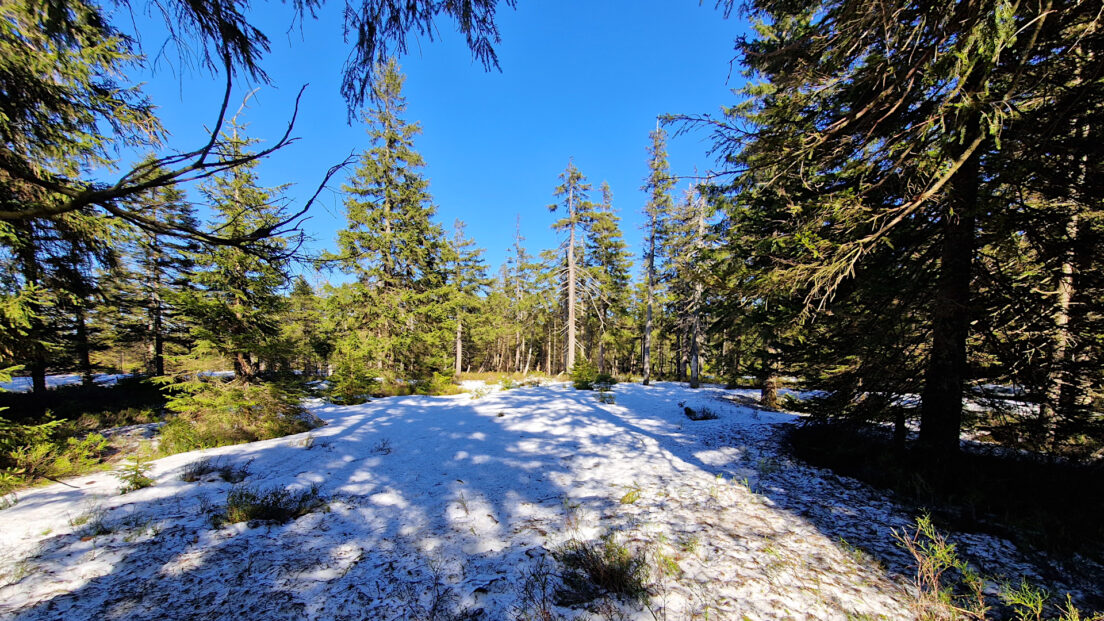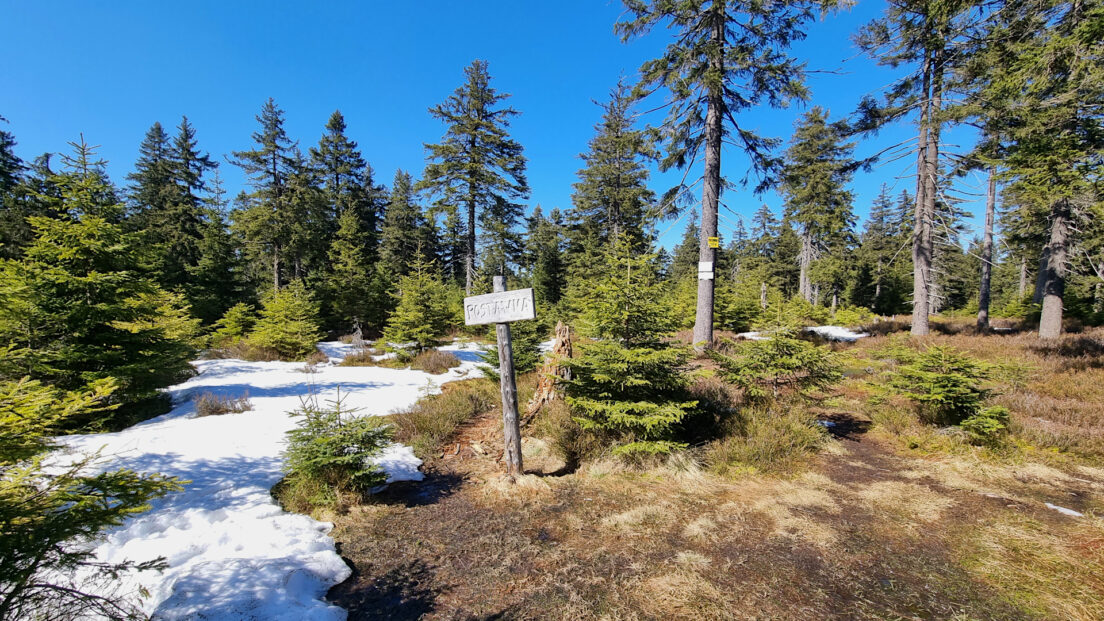The second part of the spring hike in the Złote Mountains. We descend from Postawna to the Polish-Czech border and, via the Bielskie Siodło Pass, climb Brusek Peak, the most scenic peak in the Złote Mountains. It offers distant views of the Złote Mountains, the Śnieżnik Massif, and the...
Region: Złote Mountains
Złote Mountains – a mountain range in the Eastern Sudetes in Poland and the Czech Republic. They stretch from the Kłodzko Pass in the northwest to the Ramzovská Pass in the southeast and to the Bělá River Valley in the east. To the northwest, the Złote Mountains border the Kłodzko Basin, to the west the Śnieżnik Massif, to the south the Jeseníky Mountains, to the east the Otmuchów Depression, and to the north the Bardzkie Mountains.
The highest peak of the Złote Mountains is Smrek (1127 m a.s.l.), located on the Czech side, and Postawna (1117 m a.s.l.) on the Polish side.
Geologically, the Złote Mountains lie on the border between the Western Sudetes (Western Sudetes) and the Eastern Sudetes (Eastern Sudetes). They are composed of metamorphic rocks – mostly gneisses and mica schists with intercalations of mica schists with garnets, paragneisses, amphibolites, quartz schists, graphite schists, calcite and dolomite marbles, calcareous-silicate rocks, erlanes, and phyllites. As a result of erosion, weathering, transport, and deposition, clay layers formed on the crystalline rocks in the Pleistocene and Holocene, while in the river valleys, gravels, sands, and locally alluvial soils formed.
The diversity of rocks found in this area contributed to the development of mining. There are numerous quarries, most of which are now inactive. The rock raw materials were used in construction, primarily basalts mined near Lutynia and gneisses mined near Radochów. Crystalline limestone mining continues to this day in the areas around Lipová-Lázně, Vápenná, and Supíkovice, as well as granite mining in the area around Žulová.
The Złote Mountains also abound in numerous mineral springs. Their presence is linked to the volcanic and fault zones in this region. The Lądek-Zdrój resort boasts warm mineral springs – thermal springs with a unique chemical composition and healing properties in Europe. Bathing in the local radium-rich sulfide-fluoride thermal springs has beneficial effects. Lądek-Zdrój boasts six natural healing springs and one deep thermal water well.
The terrain is composed of flat ridges separated by relatively shallow passes. Half of the peaks reaching 1000 meters above sea level are less than 15 meters high and have flat tops. The landscape is dominated by older mountains and ancient river valleys.
The mountain peaks and slopes are mostly forested. A layered mountain vegetation system occurs here. The lower montane forest reaches up to 800–900 m above sea level and is composed primarily of spruce stands, interspersed with beech, larch, and occasional oak. The upper montane forests are dominated by spruce stands. The Złote Mountains are home to many protected plants. To protect the remnants of the original lower and upper montane forest, the Śnieżnej Białki Forest Nature Reserve was established in 1963. A fragment of the original Sudeten Forest, with rare montane spruce forest and acidophilous beech forest, is protected in the Nowa Morawa Nature Reserve.
In the Złote Mountains, on both the Czech and Polish sides, numerous hiking trails, cycling trails, and cross-country skiing trails have been established. The most important tourist attractions on the Polish side include the gold and arsenic mine in Złoty Stok, the Radochowska Cave, the Calvary on Cierniak, the spa in Lądek Zdrój, the arboretum in Lądek, the ruins of Karpień Castle, and the Trojan Rocks. On the Czech side, attractions include the town of Javorník, the ruins of Rychleby Castle, the Lipová-lázně spa, the Nýznerovské waterfalls, and Šafářova skála.
Hikes in the Złote Mountains:
A spring hike in the Złote Mountains. From Bielice, we ascend the highest peak in the Polish part of the Złote Mountains. Initially, the blue trail leads through the picturesque Biała Lądecka Valley. The river meanders and creates numerous cascades. After reaching the Polish-Czech border...



